A Group day tour today in North Norfolk. What a difference a day makes – yesterday was baking hot, up to 31C, and today was cloudy and cool with a maximum of just 15C! Heavy rain was forecast for the morning, thunderstorms for the afternoon, but once again it was far too pessimistic – while we did have some mizzle early am, and rain for about an hour pm, it was nowhere near as bad as we thought it was going to be. Nothing to stop us getting out and enjoying a great day’s birding.
Our destination for the morning was Snettisham. As we got out of the minibus, it was damp, with misty drizzle, but unperturbed we walked up to the Coastal Park. We could hear a Turtle Dove purring and could just see it on the wires in a gap between two bushes. We had a slightly better view from further up, just inside gate, but it was flushed by a dogwalker coming out. We could see it purring. It flapped up and started to circle down in display flight, and a second Turtle Dove responded with a display flight of its own, in the distance.
As we walked on, there were several Goldfinches and Greenfinches on the short grass, along with a couple of Dunnocks and a juvenile Robin. The first Turtle Dove was back on the wires now, further along, but then flew to a hawthorn ahead of us where we got it in the scope again. It looked a little damp!
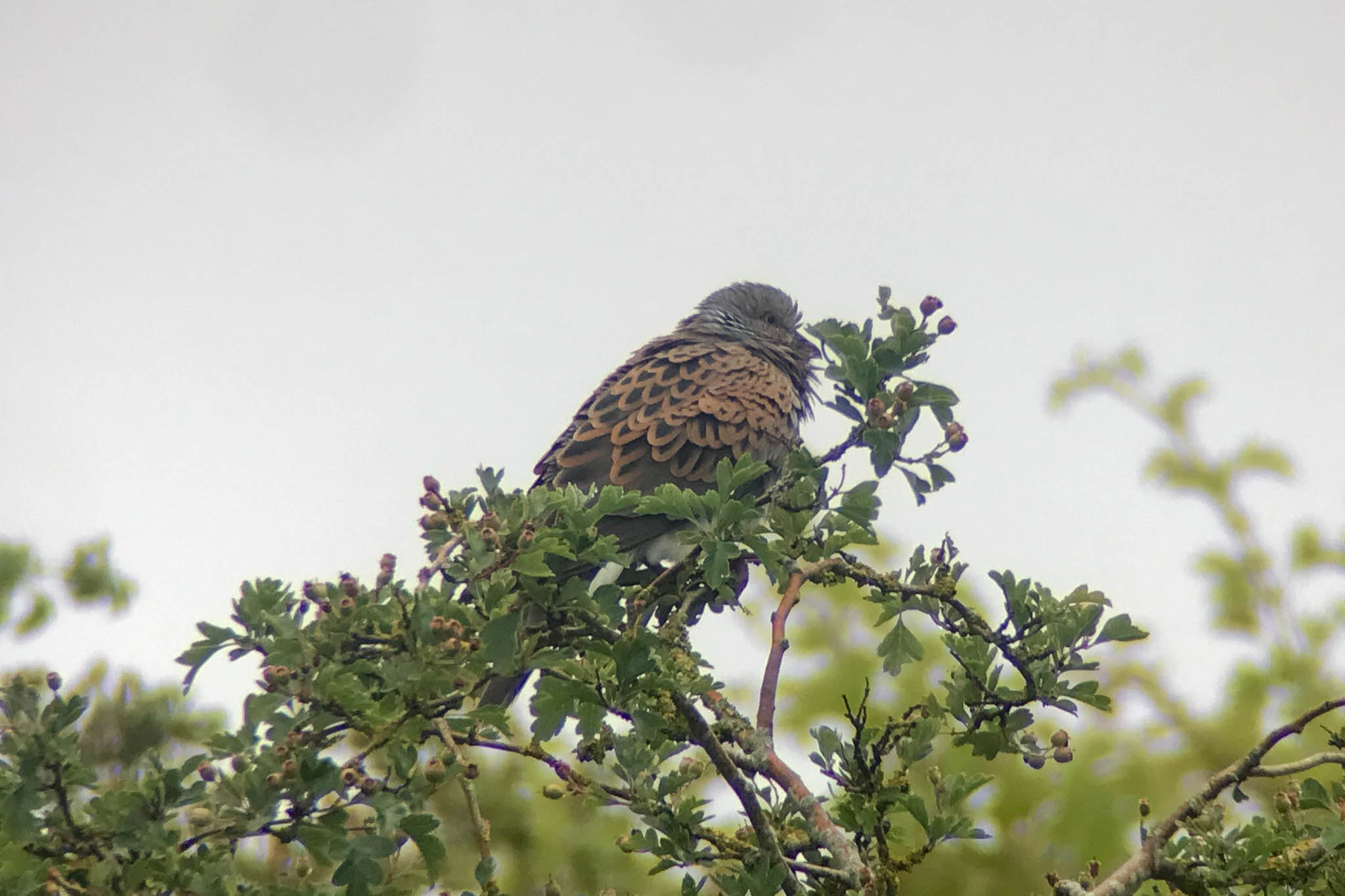
The rain had stopped, so we decided to press on and see how far we could get. A Blackcap was singing from deep in the bushes and a Chiffchaff flitted in and out along the edge ahead of us. A Sedge Warbler was singing and song flighting and eventually posed nicely in a small hawthorn in the reeds. A Cetti’s Warbler shouted from typically deep in the undergrowth.
There were several pairs of Stonechat on the way up, with quite a few fledged juveniles now. At the open area, there were a number of Linnets, Goldfinches, a Greenfinch and a Chaffinch feeding on the remains of the seed put down. Not surprisingly, given the weather today, there were rather fewer butterflies and bees than normal, but at least it was staying dry.
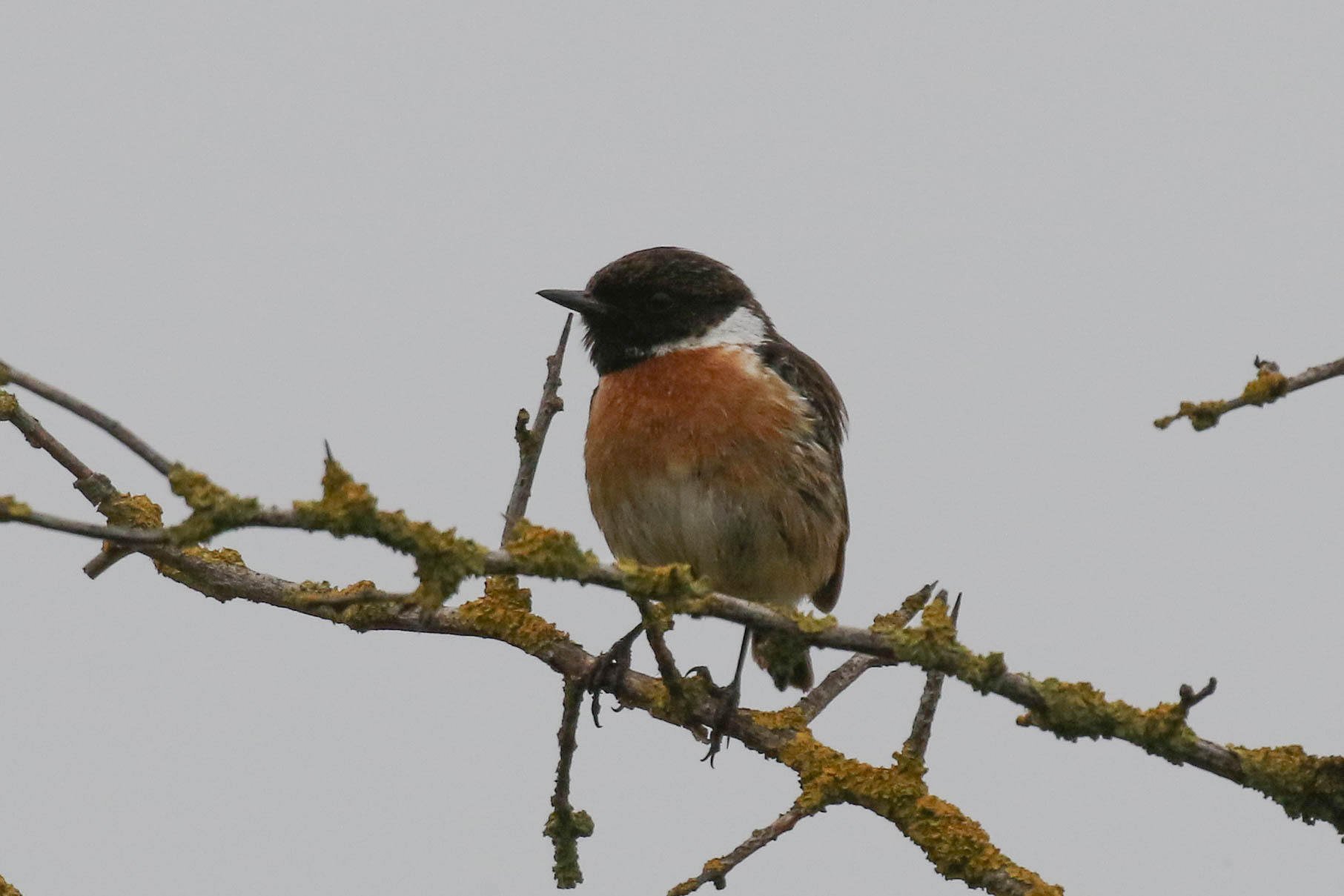
As we got to the crossbank, two Cuckoos shot past us and we watched them fly down over the Coastal Park behind us and disappear through the bushes. Quite a few have already left the UK and begun the journey south, so it was good to still catch up with a couple here. There was a single drake Tufted Duck and several Common Pochard on the pool just beyond the crossbank, along with a pair of Mute Swans with two cygnets. A Common Tern flew past and headed up towards Heacham, looking for food in the pool.
The tide was in but we had a quick look out at the Wash. A Little Tern flew north over the water quite close in, then several more came back south further out. We trained the scope on an Oystercatcher and a Ringed Plover, both nesting in the cordon, right next to each other. The Ringed Plover nest has had a cage placed over it for added protection – the birds don’t seem to mind! We heard a commotion and looking inland, watched a Marsh Harrier flying over Ken Hill Marshes chased by a selection of Avocets and Lapwings.

We cut across and climbed up onto the inner seawall. The Great Reed Warbler is still here and we could hear it singing before we even got to the seawall, but scanning the reeds from here we couldn’t see it at first. So we turned our attention initially to several Spoonbills which were close to us on the marshes just beyond. We had great views through the scope of an adult, with shaggy nuchal crest and yellow-tipped black bill.
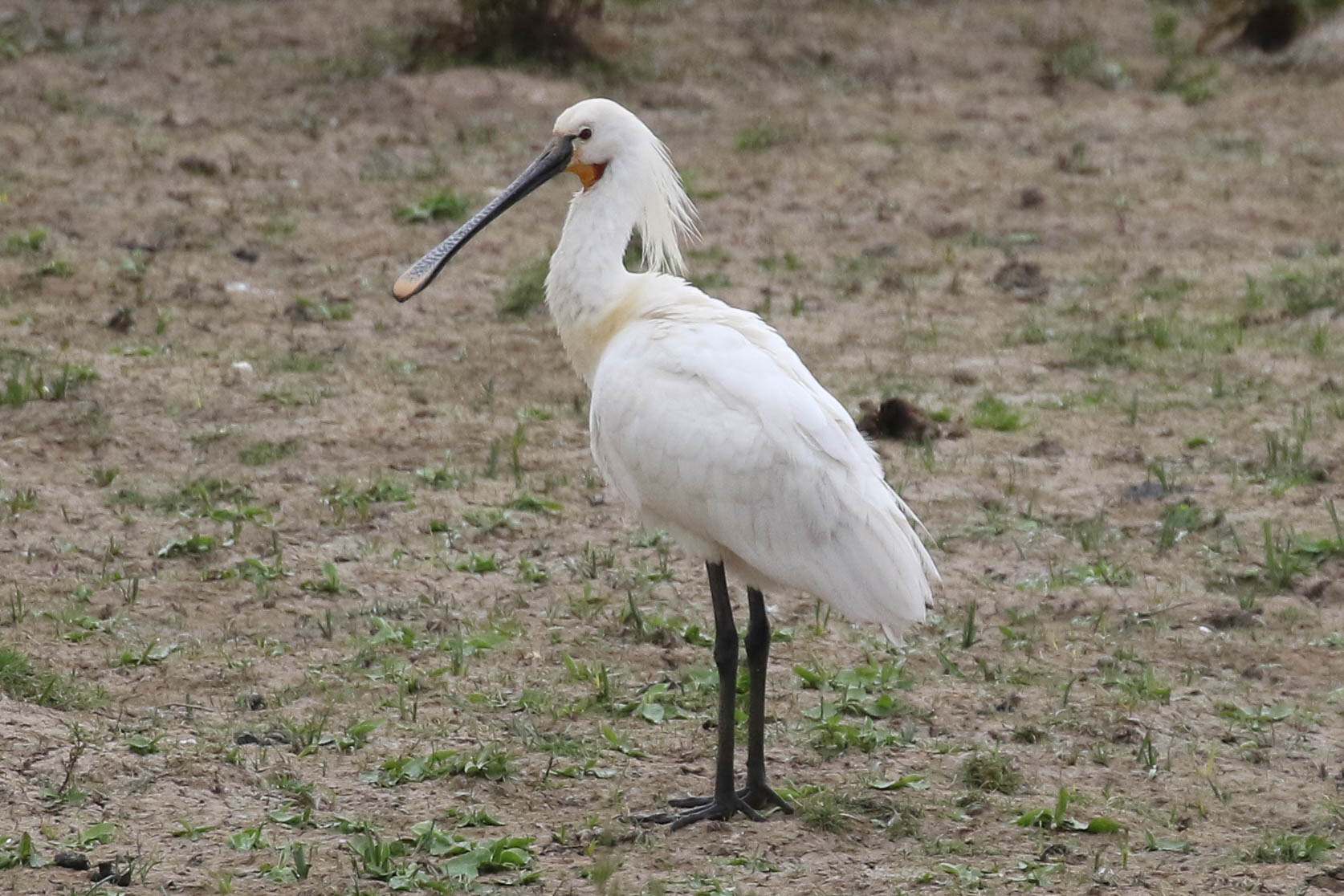
The Great Reed Warbler flew across to the other side of the channel and perched up in the reeds, where we could see it, albeit only briefly. So when we had enjoyed a good look at the Spoonbills, we walked on a little further, up to the corner and looked back down along the line of the ditch.
After a short while the Great Reed Warbler came up again and started singing from the top of the reeds. We had a great view through the scope now of its orange gape as it sang. A regular Reed Warbler was flicking around on the edge of the ditch too, and we could see how much smaller it was.
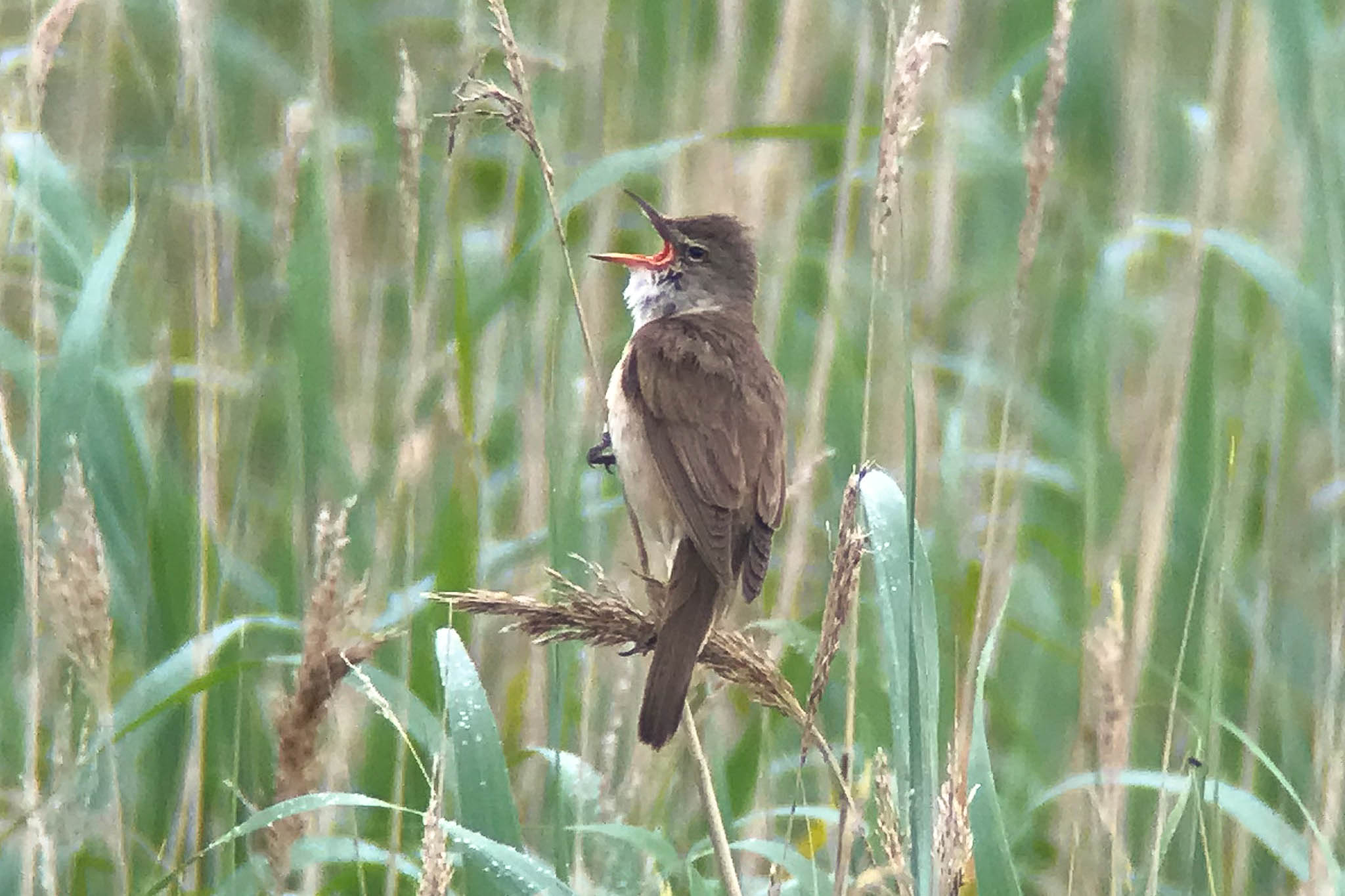
Scanning the marshes now, we could see a very large roost of Oystercatchers, several hundred strong, whiling away the time over high tide until they could head back to the Wash. A couple of Black-tailed Godwits flew round but when they landed we lost them in the vegetation, which is very tall now. There was an Egyptian Goose out here too and a couple of Sandwich Terns flew over calling.
There were several pairs of Avocets, Lapwing and Oystercatcher with young. One or two Redshanks flew around calling, but we couldn’t see any young ones. We had a better view of the pair of Avocet still on the pool just behind us with four very cute small juveniles.
With the low cloud and rain earlier, the Swifts were feeding very low this morning, zooming back and forth out over the marshes. While we were up on the seawall, they came very close at one point, zooming right past us at eye level!
On the walk back, we could hear more Sedge Warblers and Common Whitethroats singing, and had some good views from up on the bank looking down into the bushes. A male Reed Bunting was singing too, in the top of a large hawthorn beside the reeds. We continued to scan the marshes – as well as lots of Black-headed Gulls, we found two juvenile Spoonbills, we could see their ‘teaspoon-bills’, still growing and much shorter than the adults.
One of the group had lost a jumper on the walk up, so we dropped down off the bank and cut back through the Coastal Park and found it on the way back. A Turtle Dove flew up ahead of us from the seed as we walked round a corner and another Turtle Dove was still purring back towards the road. A female Bullfinch was feeding on the ground with the Goldfinches by the entrance. As we walked back to the minibus, two Mediterranean Gulls flew over calling. Remarkably, given the weather forecast, we had managed to get all the way round and mostly stayed dry, after the initial drizzle!
We headed round to Titchwell for the afternoon and stopped first for lunch by the Visitor Centre. A hot drink from the cafe was much appreciated today! After lunch, we headed out onto the reserve. We had a quick look at the feeders but there wasn’t much coming in, although we did get a chance to admire the new pond.
As we walked out along the main path past the reedbed, we noticed a Great White Egret flying in over the Thornham Grazing Marsh. When it got closer, we could see it was dark-billed, which confused two people on the bank nearby who started to question the identification. We explained to them that Great White Egrets can have dark bills in the breeding season, a pitfall for the unwary! A second yellow-billed Great White Egret then flew in too, so we could highlight the other main identification features, beyond bill colour.

A couple of Marsh Harriers circled over the back of the reedbed. We stopped to look at the moulting ducks on the new bund, and noticed three Little Grebes in the channel. There was a Great Crested Grebe on the big reedbed pool too.
A loud shout of ‘Bittern‘ from some people back along the path behind us immediately drew our attention (as it would!), and we turned round to see a Bittern come up from behind the bank on the Thornham side right behind us. It flew over the path right beside us and headed out over the reedbed. What a bird!

A little further up, we heard Bearded Tits calling and looked down to see a juvenile perched in the reeds briefly. A couple of the group saw a male lower down too, but not everyone got onto either of them. We watched and waited, and after a while three juveniles appeared. One perched up in the top of the reeds doing the splits!
A Sedge Warbler was singing away nearby, perched up in full view right next to us. It was not getting the attention it deserved while we were watching the Bearded Tits, but once they dropped down out of view we turned to it. It was totally unperturbed by people walking past or standing only a couple of metres away.
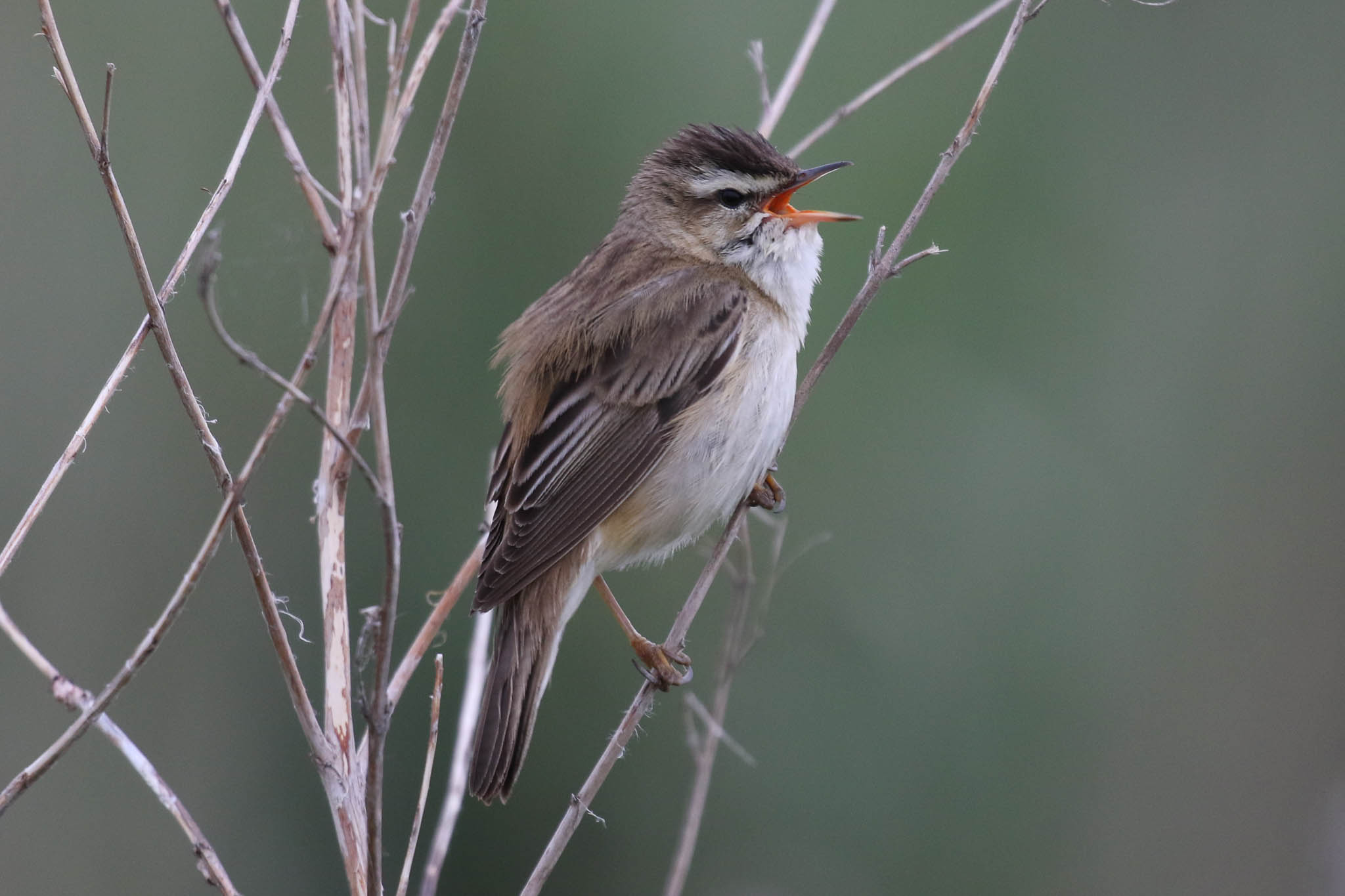
There was some darker cloud ahead now it was threatening to rain, so we made our way down into Island Hide. Not long after, the rain started and it was fairly heavy for a short time.
As we have mentioned before, it is a bumper year for Avocets, which have really benefited from the work done last year on the Freshmarsh, with a record 97 nests this year. Again, we could see lots of juveniles now, of various ages. One quite small one swam all the way from the island in front of the hide to the reeds by the main path to feed, and then back. There are lots of Black-headed Gulls on the islands with chicks too. But it was the two juvenile Common Terns which won the cuteness trophy.
There were lots of Black-tailed Godwits on the freshmarsh today, mostly immature non-breeders (they don’t breed in their 1st year), but one or two more rusty birds looked like they might be early returnees from Iceland already. We got the scope on a Little Ringed Plover which was on the bund, but it kept getting chased by the Avocets. Then another Little Ringed Plover appeared on the island in front of the hide, and we were able to watch it working its way round the edge, although it did get chased by the Avocets here too.
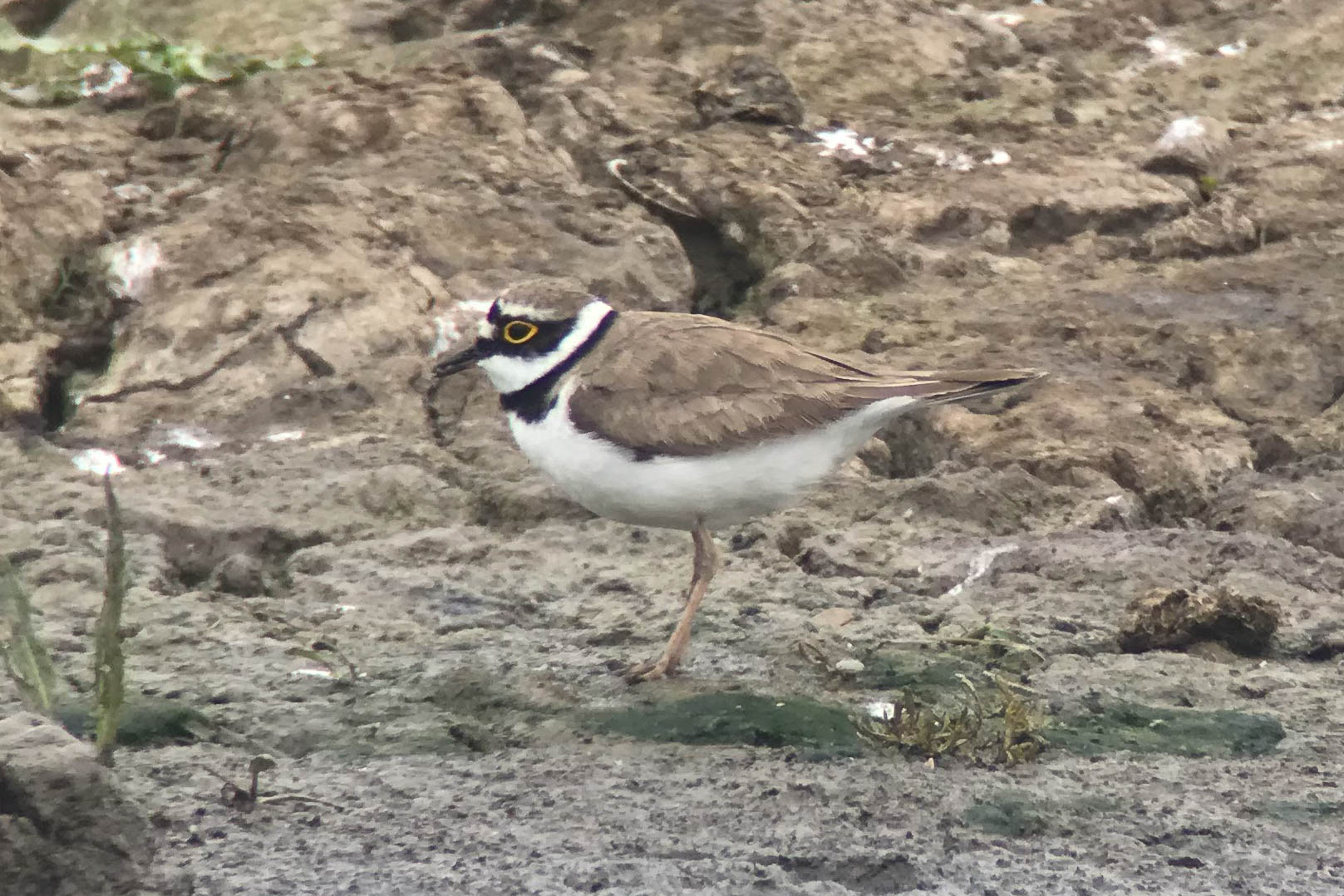
With the rain and low clout, there were lots of Swifts again feeding low over the reedbed and the back of the Freshmarsh. Looking through, we could see several House Martins and a couple of Swallows, and one of the group had a lone Sand Martin too.
We waited for the rain to stop, then made our way round to Parrinder Hide. There were even more Avocets on the next compartment, with a wide variety of different sizes of juvenile, a veritable Avocet creche! From the hide, we could see three 1st summer Little Gulls on one of the islands. A pair of Mediterranean Gulls dropped in, and we had a good view of them through the scope, admiring their black hoods and bright red bills.
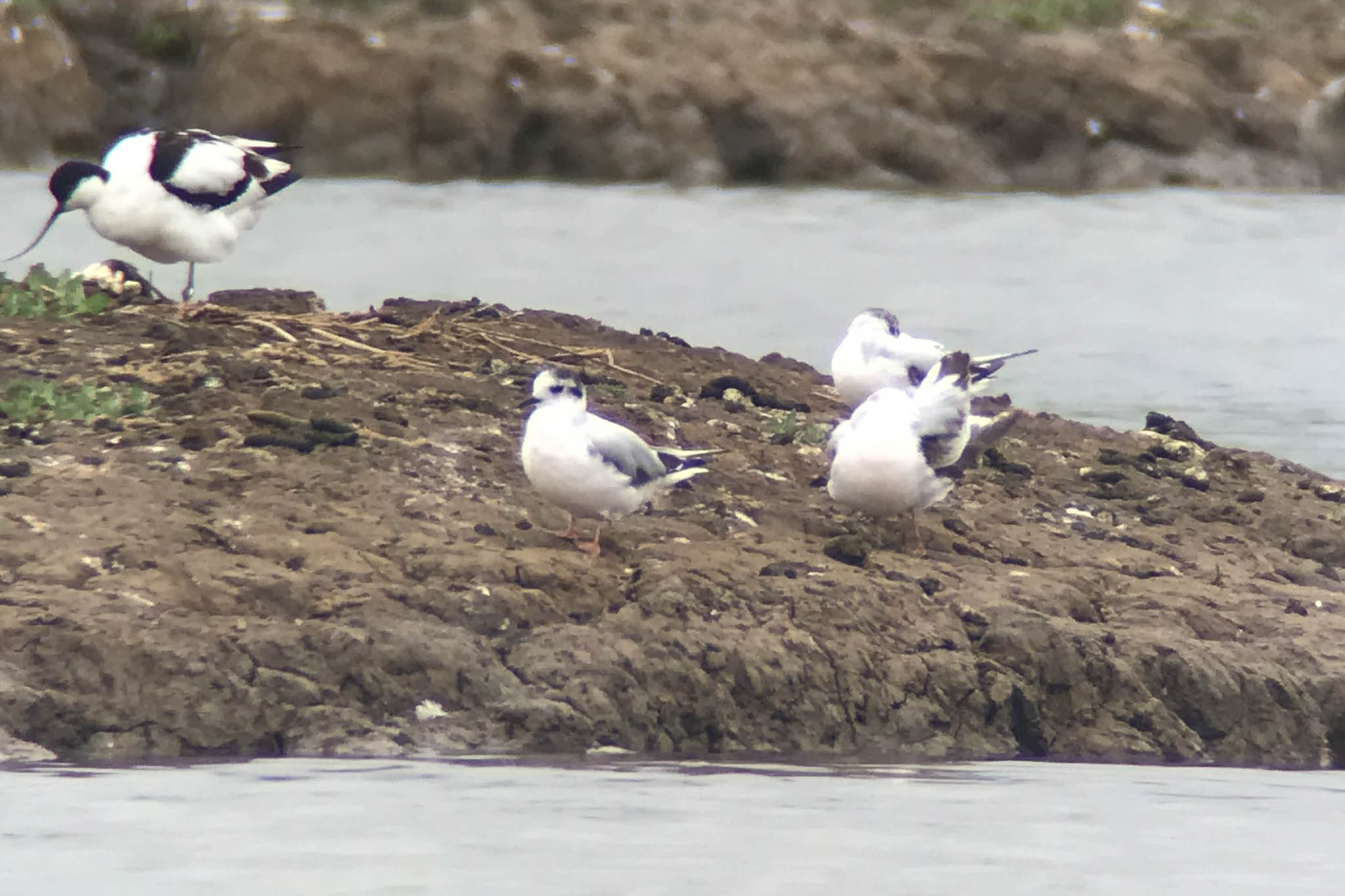
A lone Curlew appeared at the back – again at this time of the year, hard to tell if an early returning bird from further afield, one which hadn’t travelled, or one from somewhere more local. The two Great White Egrets were now in the dead trees in the back of the reedbed. As before, the Avocets in front of the hide were having a go at everything. They chased off a Meadow Pipit, had a go at a pair of Tufted Ducks, and then started having a go at some Mallard ducklings.
Looking out over the Thornham saltmarsh, we could see a large flock of Starlings on the concrete bunker. The young birds in particular congregate here after fledging. There were more Black-tailed Godwits feeding out on the saltmarsh and we noticed that one of them was colour ringed. A lime ring with a black ‘E’ indicated it was a Continental Black-tailed Godwit (subspecies limosa) from the very small breeding population on the Ouse Washes – most of the birds here are Icelandic Black-tailed Godwits (islandica).
A Sparrowhawk circling out over the dunes flushed a big flock of Linnets off the saltmarsh. A Marsh Harrier was standing on a wooden post and a Common Buzzard was perched on the tower out at Thornham Point. Scanning across, we found two Cuckoos perched up too, one over by the concrete tower and one on an elder bush out in middle. There were Skylarks singing here too now.
The Tidal Pools looked quiet at first, but there was a Little Tern on the mud towards the back, which flew round at one point. It landed back down on the mud and we had a nice view through the scope. Out to the beach, the tide was out and the sea flat calm. A few distant Sandwich Terns flew past, and through the scope we could see lots more around the breeding colony on Scolt.
There were lots of waders on the mussel beds. We could see lots of Bar-tailed Godwits in particular, and even from the top of the beach we could see one was colour ringed, but it was too far to read the code on the yellow flag. We quickly found out it was from Norway and – postscript – after we were able to read the code the following day, we found out it had been ringed in southern Norway in Sept’21, as a juvenile on southbound migration.
There were one or two Knot closer, but more further up towards Brancaster, and the odd Turnstone. Six Spoonbills were feeding in the shallow pools. A Curlew was asleep on the beach and a lone Grey Plover flew past with a Knot.
It was time to walk back. When we got back to the reedbed, we could hear Bearded Tits calling again and looked down to see nine juvenile Bearded Tits together. They showed much better now, perched in the top of the reeds, before they flew further back, over the bank. A Red Kite drifted over too.

As we walked back past the visitor centre, we stopped to watch a Jay in the trees. A Wren was alarm calling, presumably not happy with its presence.
As we drove back home, we discussed how lucky how we had been with the weather. If we had believed the forecast, we would maybe have called it off. But once again, the forecast was far too pessimistic and we ended up having a great day out.
















